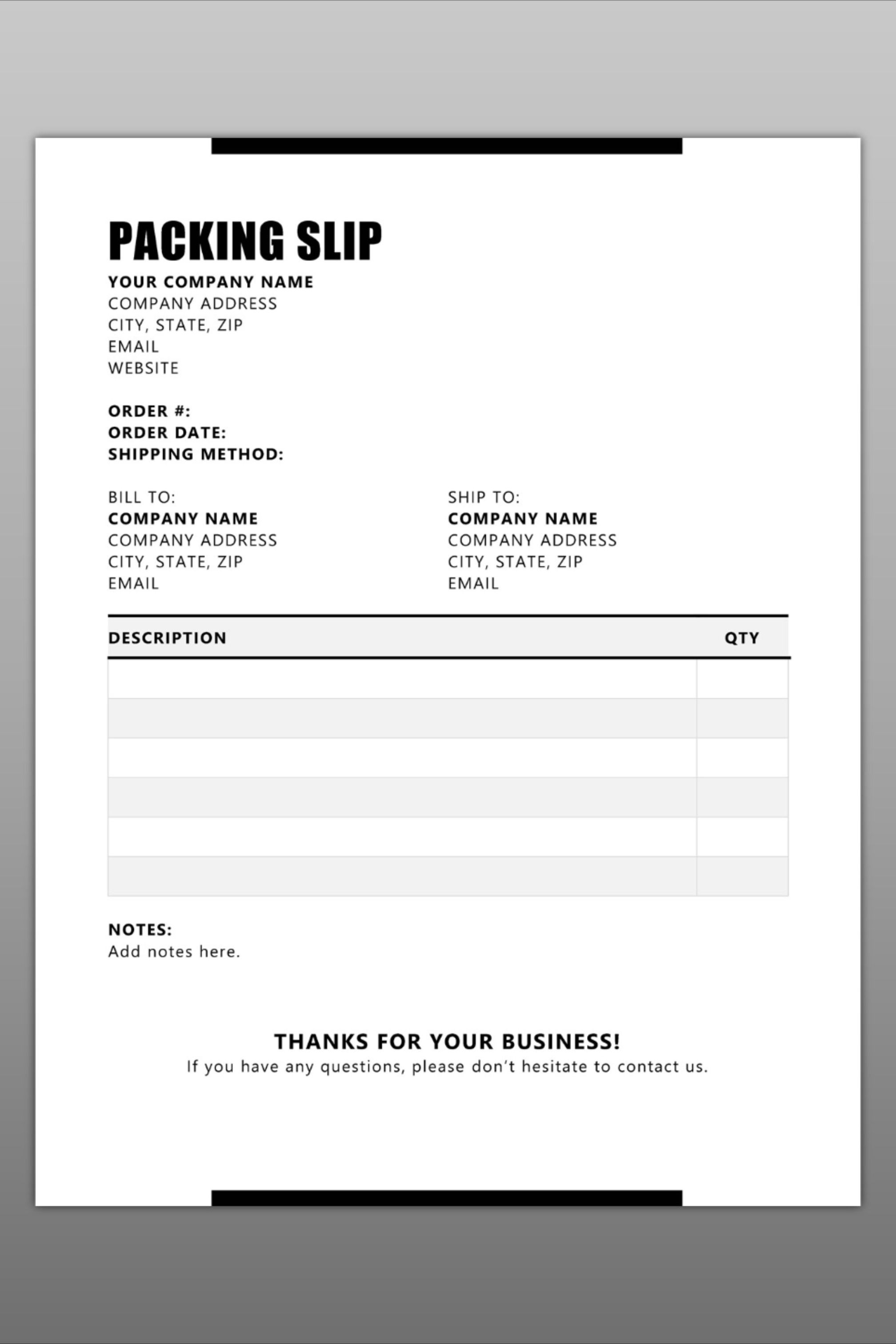What Is A Packing Slip

In the world of commerce and logistics, efficient communication and organization are paramount. Among the many documents that facilitate smooth operations, the packing slip stands out as a crucial tool. This article delves into the details of a packing slip, its purpose, and its integral role in the supply chain.
Understanding the Packing Slip

A packing slip, also known as a packing list, is a detailed document that accompanies a shipment of goods. It serves as a comprehensive checklist, outlining the contents of the package, and providing vital information to both the shipper and the receiver.
This simple yet essential document ensures that the right products are shipped to the correct destination and aids in verifying the accuracy of the order. It acts as a communication bridge between the sender and the recipient, enhancing transparency and accountability in the supply chain process.
Key Components of a Packing Slip

A well-designed packing slip includes several critical elements that contribute to its effectiveness. Here’s a breakdown of the key components:
1. Shipment Information
This section contains essential details about the shipment, including the shipping date, the method of transportation, and the expected delivery date. It also includes the tracking number, which is vital for monitoring the package’s journey.
2. Sender’s Details
The packing slip provides clear information about the sender, such as their business name, address, and contact details. This ensures that the receiver can easily identify and contact the sender if needed.
3. Recipient’s Information
Equally important is the recipient’s section, which includes the consignee’s name, address, and any specific delivery instructions. This ensures that the package reaches the intended recipient smoothly.
4. Product Details
The heart of the packing slip lies in the product details. This section provides an exhaustive list of the items included in the shipment. Each product is typically identified by its unique product code, description, quantity, and any relevant specifications.
Additionally, this section may include important notes such as the product's batch number, manufacturing date, and any special handling instructions.
5. Additional Information
Some packing slips also incorporate extra information, such as the purchase order number, the invoice number, and any applicable promotions or discounts. This additional data can aid in cross-referencing and accounting processes.
| Component | Description |
|---|---|
| Shipment Info | Shipping date, method, delivery date, and tracking number. |
| Sender's Details | Business name, address, and contact information. |
| Recipient's Info | Consignee's name, address, and delivery instructions. |
| Product Details | Product codes, descriptions, quantities, and specifications. |
| Additional Notes | Purchase order, invoice numbers, promotions, and discounts. |

The Role of Packing Slips in the Supply Chain
Packing slips play a pivotal role in the seamless functioning of the supply chain. They offer numerous benefits, contributing to efficient logistics and satisfied customers.
1. Verification and Accuracy
Packing slips provide a clear and detailed overview of the shipment’s contents. This allows both the sender and receiver to verify that the correct products are included and in the right quantities. Any discrepancies can be identified and addressed promptly, reducing errors and minimizing customer dissatisfaction.
2. Efficient Shipping and Delivery
With all the necessary information readily available, packing slips streamline the shipping and delivery process. They guide the shipping staff in packing and handling the goods appropriately. Additionally, the detailed product information aids in efficient inventory management and tracking.
3. Improved Customer Experience
When a customer receives a package with a well-prepared packing slip, it enhances their overall experience. The slip provides transparency and reassurance, allowing customers to quickly identify the items they ordered and understand any additional information. This simple step can significantly impact customer satisfaction and loyalty.
Best Practices for Packing Slip Design
To maximize the effectiveness of packing slips, consider these best practices:
- Use clear and concise language to ensure easy understanding.
- Incorporate a visually appealing design to make the slip more engaging.
- Include a unique reference number for easy tracking and referencing.
- Ensure the slip is easily accessible and visible within the package.
- Regularly review and update the packing slip to align with any changes in products or shipping processes.
Conclusion

The packing slip is a powerful yet often overlooked tool in the supply chain. By providing a detailed account of the shipment’s contents, it ensures accuracy, efficiency, and an enhanced customer experience. Well-designed and strategically utilized, packing slips can significantly contribute to a business’s success and reputation.
How is a packing slip different from an invoice?
+A packing slip focuses on the shipment’s contents and serves as a checklist, while an invoice is a detailed record of the financial transaction, including the cost of goods and any applicable taxes.
Can packing slips be customized for specific industries or products?
+Absolutely! Packing slips can be tailored to include industry-specific information or product-related details, making them more relevant and useful for both the sender and receiver.
What is the ideal placement for a packing slip within a package?
+It’s best to place the packing slip in a visible location within the package, such as on top of the items or in a clear pouch. This ensures it’s easily accessible for the receiver.



